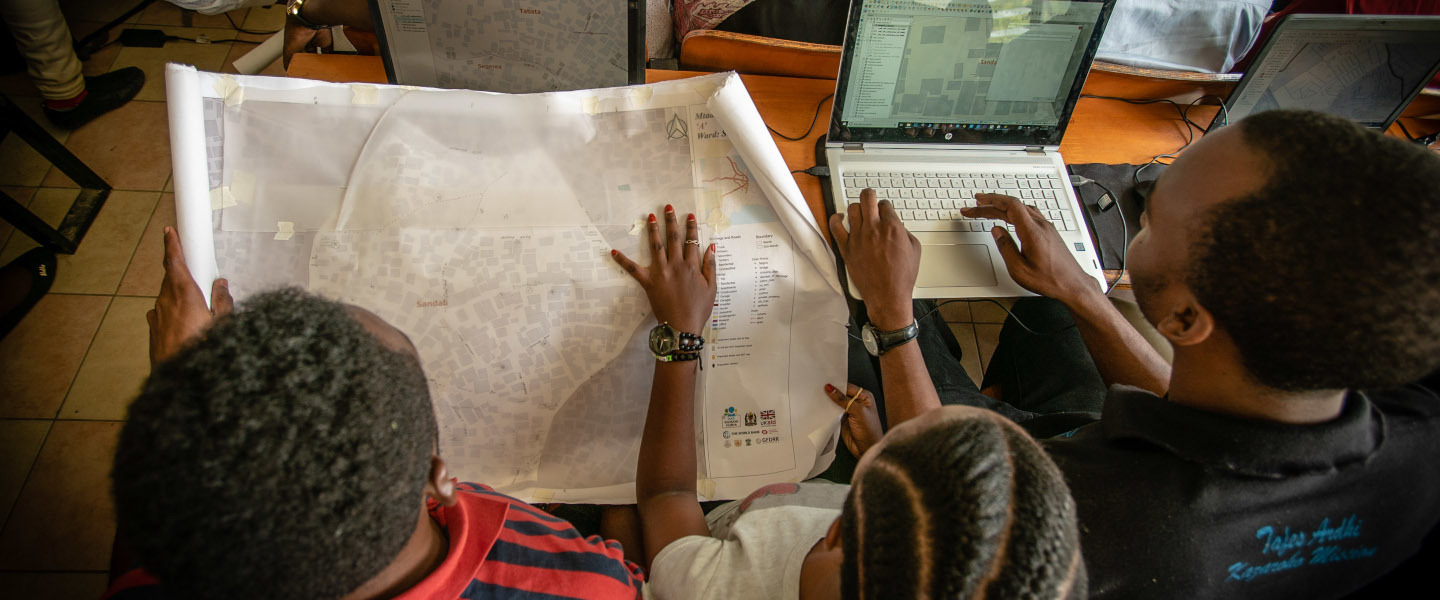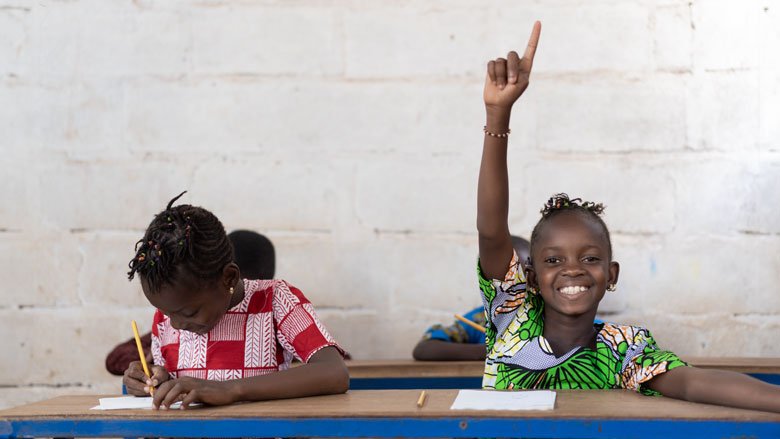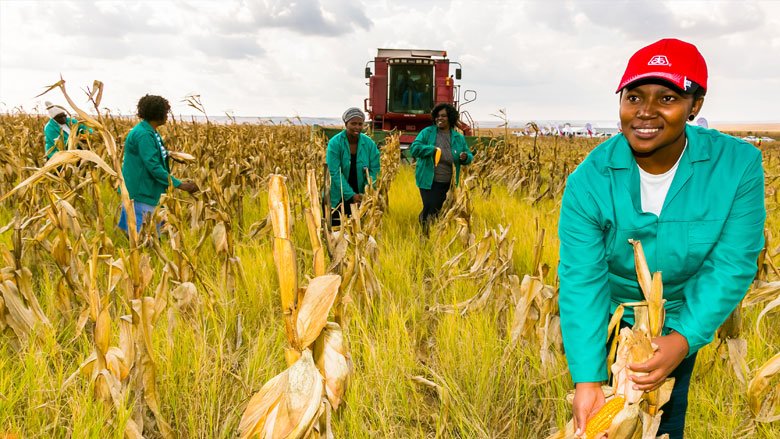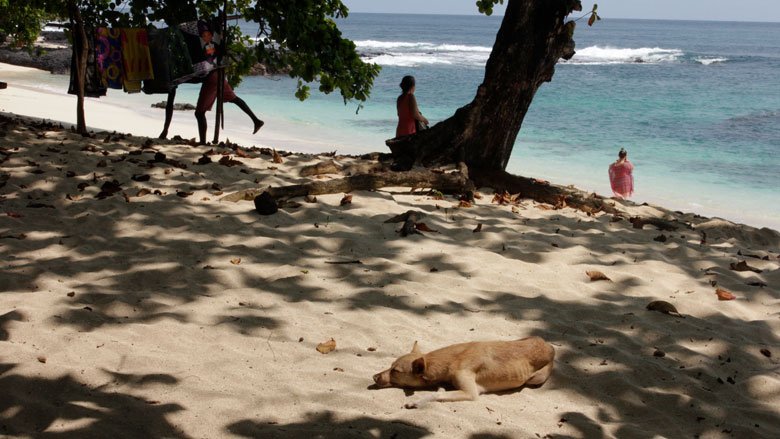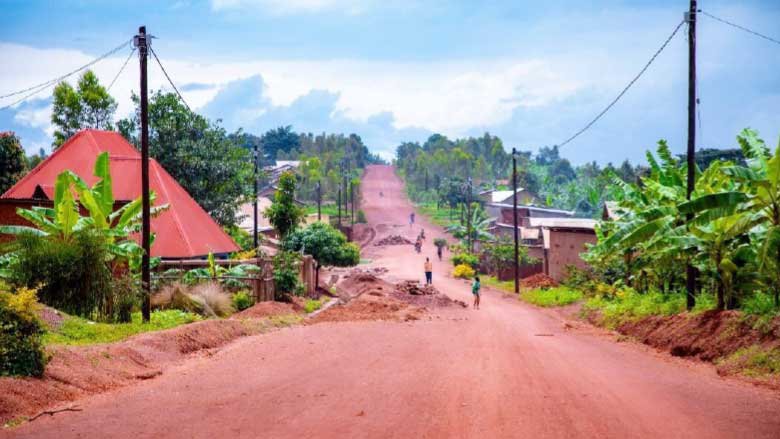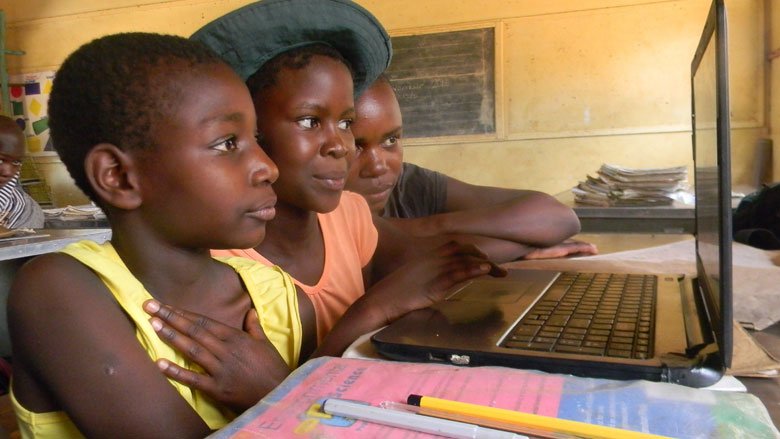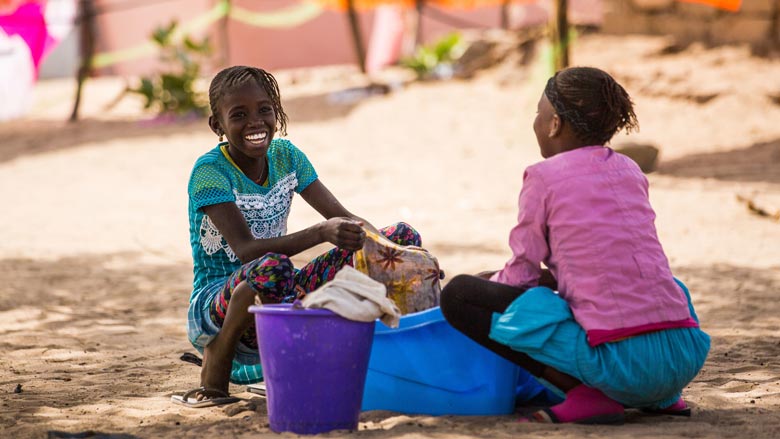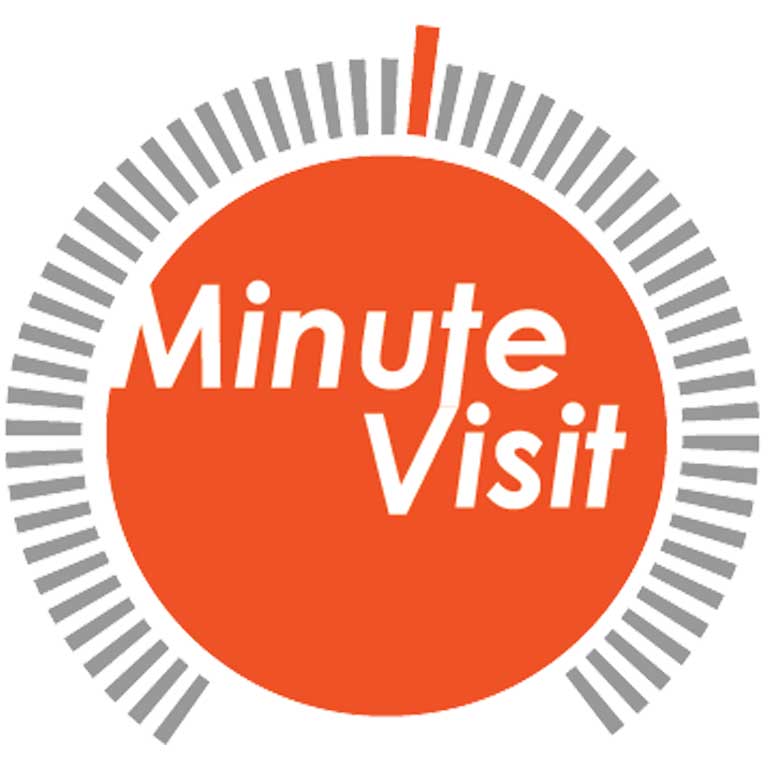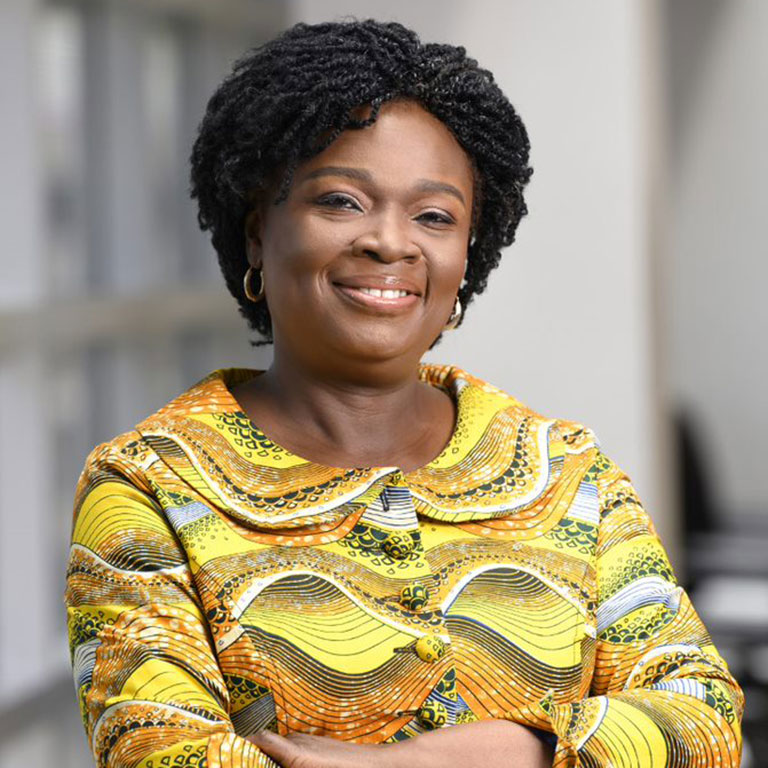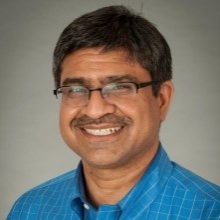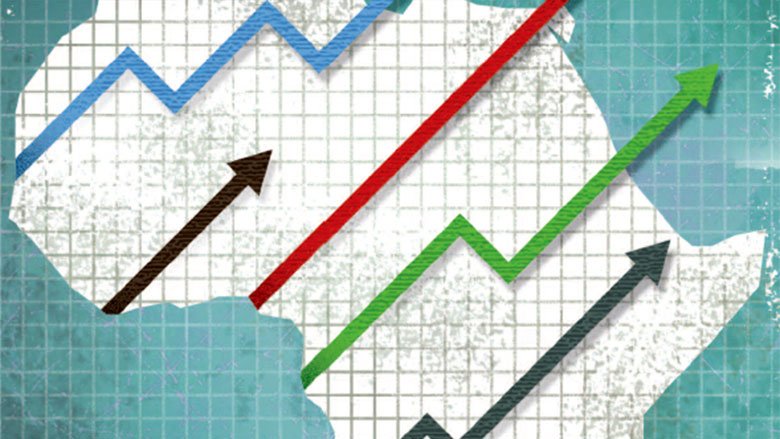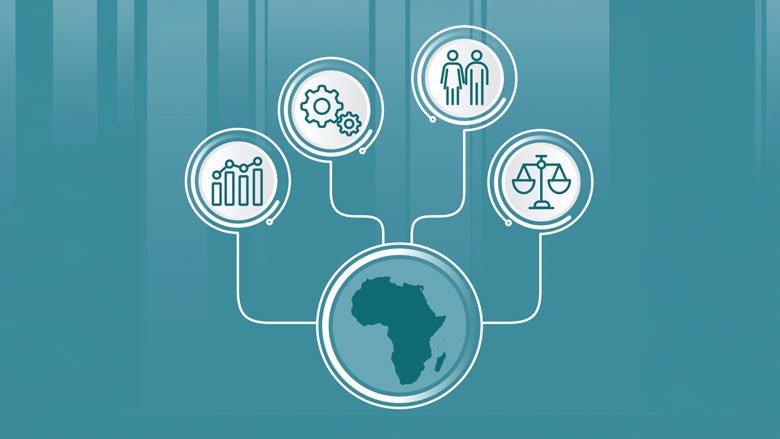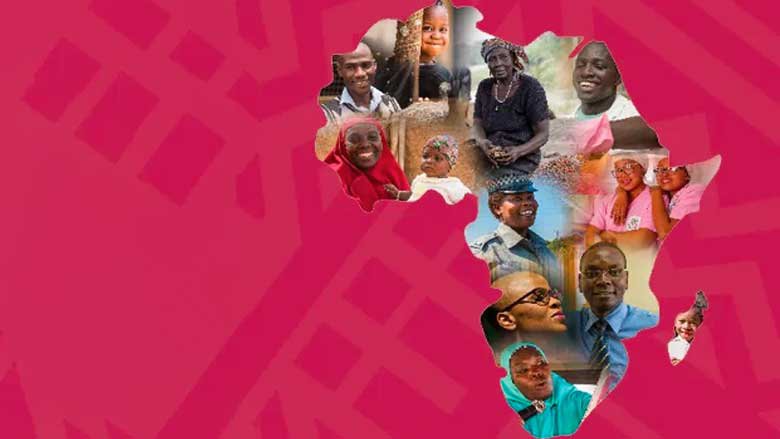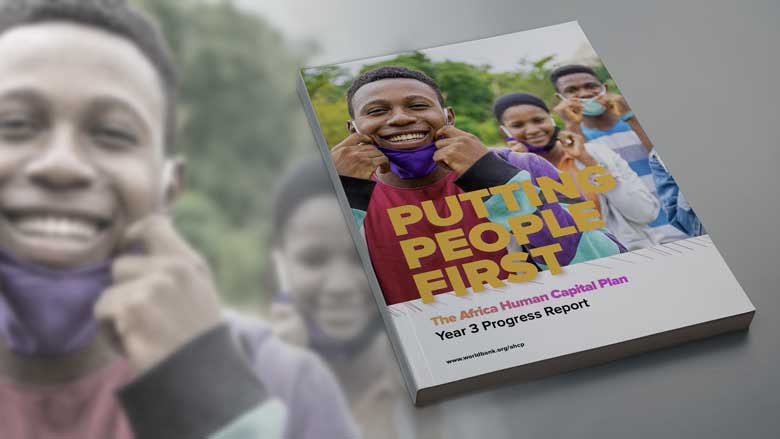PEOPLE | PROSPERITY | PLANET | INFRASTRUCTURE | DIGITAL
Home to almost 60% of Africa’s population, the Eastern and Southern Africa (AFE) region is geographically, culturally, and economically diverse and comprises 26 countries stretching from the Red Sea in the North to the Cape of Good Hope in the South.
AFE boasts some of the world’s richest natural resources. The Democratic Republic of Congo (DRC) produces much of the world’s mined cobalt, and Angola leads the region in the production of crude oil. For countries in Southern Africa, precious metals and minerals are the biggest exports, including gold and diamonds from South Africa and platinum from Zimbabwe. Many of these minerals will be in critical need to combat climate change and present a growth opportunity in a low-carbon future.
Economic growth in AFE is expected to accelerate from a trough of 2.2% in 2023 to 3.2% in 2024 and firm further to 3.6% in 2025–26. The growth performance of the AFE subregion is dragged down by lower-than-average growth in Angola and South Africa. Excluding these two countries, economic activity is expected to increase by 4.3% in 2024 and 5% in 2025–26. Within the subregion, the East African Community is projected to grow at the fastest pace (5.3% and 5.8% in 2024 and 2025–26, respectively), thanks to robust growth in the Democratic Republic of Congo, Kenya, Rwanda, and Uganda.
The World Bank works closely with country leaders, civil society, development partners, and youth in Eastern and Southern Africa to chart a brighter course for the region’s future. We also partner with regional economic organizations, such as the Common Market for Eastern and Southern Africa, the East African Community, and the Southern African Development Community to help countries reach their development potential.
Development challenges and World Bank support
The World Bank’s work spans the five dimensions of People, Prosperity, Planet, Infrastructure, and Digital for maximum impact on development across the world.
People are at the heart of Africa’s development, and the region has the potential to be one of the most productive in the world: between 2030 and 2050, Sub-Saharan Africa will have 90% of the growth in the world’s working-age population.
The Africa Human Capital Plan, which presents a blueprint to empower women through education and skills for future jobs; enhanced sexual and reproductive health rights; economic inclusion and jobs; and empowerment and voice, and large-scale programs such as The East Africa Girls’ Empowerment and Resilience Program are serving as catalysts to accelerate progress in the key areas of education, health, and nutrition services, job creation, and empowering women and girls.
Education is the key to helping people break the cycle of poverty. In AFE, 62 million children, adolescents, and youth are projected to be out of school by 2030. Without substantial action, approximately 89% (or 122.8 million) of school-aged children will be ‘learning poor’. The World Bank is striving to help countries reduce learning poverty in the region from 89% to 65% by 2030 and is providing support to countries to: expand education systems with more infrastructure, teachers, and materials; equip youth, entrepreneurs, and higher education systems with the essential skills and training; and empower girls and children with disabilities to stay in school and enjoy more opportunities for building skills.
The World Bank is working with countries to develop inclusive policies and governance systems to help maximize shared prosperity in the region. It is also focusing support on creating more and better jobs, given that more than 10 million youth enter Sub-Sahara Arica’s labor market every year and only 3 million formal jobs are created annually, leaving many unemployed. The World Bank is supporting countries in AFE to invest more in education to boost semi-skilled occupations for the region, educate girls, and provide access to jobs for women, and implement cost-effective private sector reforms that help boost competition.
With funding from the International Development Association (IDA), the World Bank is helping introduce stability in extremely fragile political contexts. Between 2020 and 2023, the South Sudan Safety Net Project provided temporary income opportunities via cash transfers of $23.5 million across 10 counties, benefiting close to half a million people, 52% of whom were women, strengthening local capacity amidst violence, displacement, and trauma.
AFE’s Food Systems Resilience Program is expected to reach 100 million people across the region by tackling the underlying structural challenges of food insecurity and reducing people’s vulnerability to unpredictable food-related shocks from climate and conflict events.
To end poverty on a livable planet, the World Bank is focused on helping people and systems in AFE mainstream addressing climate challenges, with a focus on adaptation. AFE is supporting efforts to adopt renewable energy, climate-smart agriculture, watershed management, and climate resilience, while leveraging countries’ capacities to become hubs of clean energy and build green and resilient infrastructure and cities.
World Bank Country Climate Development Reports (CCDRs) show that boosting resilience and adaptation is an integral part of poverty reduction. AFE aims to provide 40-45% of our financing annually in support of climate-related measures, around 50% for adaptation.
Our Next Generation Africa Climate Business Plan provides a blueprint to help Sub-Sahara African economies achieve low carbon and climate-resilient outcomes in food security, climate shocks, resilient green cities, clean energy, environmental sustainability, macroeconomic policies, and green and resilient infrastructure. Our recent Regional Climate Resilience Program for Eastern and Southern Africa (RCRP) Series of Projects (SOP) is implementing solutions and enhancing regional coordination to scale up action on climate resilience.
We are also working with resource-rich AFE countries in supporting the Climate-Smart Mining Initiative as the world moves towards renewable energy sources and we are also committed to supporting forest-smart development in the Congo Basin, putting people at the center of the effort.
Infrastructure investments are essential to driving economic development in AFE, especially related to reliable and affordable energy access. AFE is helping client countries set up platforms to drive coordinated efforts and mobilize the needed public and private sector financing to increase access, and a WBG team is working on a program to scale up private financing by leveraging technology in distributed renewable energy (DRE) to complement large-scale grid densification programs and regional power trade opportunities. A target has been set of reaching at least 100 million people by 2030 under the Access to Clean Resilient Electricity MPA.
The World Bank is also stepping up support for critical green and climate-resilient infrastructure to allow people to access reliable and affordable electricity, safe roads and transportation to markets and services, and high-speed internet that opens up opportunities for communities and businesses alike.
The Tanzania Rural Electrification Expansion Program (TREEP) has provided more than 4.5 million people with access to electricity, adding new connections in more than 1,600 and 6,000 healthcare and education facilities respectively, and creating employment and business opportunities for women and improving outcomes for students. The World Bank’s ASCENT program is structured to triple the rate of progress on energy access in AFE and provide life-transforming opportunities for 100 million people across 20 AFE countries over the next six years by accelerating energy access and scaling up access to grid and off-grid electricity and clean cooking.
The Burundi Integrated Community Development Project or the PRODECI-Turikumwe has helped refugee and host farming communities improve food security, build socio-economic infrastructure, and support micro-enterprise development.
Infrastructure related to water and sanitation is key for the region as well. The access gap to safe Water, Sanitation, and Hygiene (WASH) in the region is widening. AFE is implementing a plan with a focus and specific targets set for nine priority countries in FY23-FY26: Angola, the Democratic Republic of Congo (DRC), Kenya, Madagascar, Mozambique, Sudan, Tanzania, and Uganda.
Access to WASH can be a key driver of school dropout rates for adolescent girls, and this is being addressed in Malawi by the Lilongwe Water and Sanitation Project. It has transformed the water landscape, providing water supply upgrades for a quarter million people and Tanzania’s $350 million Sustainable Rural Water Supply and Sanitation Program has delivered improved sanitation for 7 million people.
World Bank support is helping Sub-Saharan Africa build the foundation for a vibrant, safe, resilient, and inclusive digital economy. Digitization is essential for economic growth, jobs, poverty reduction and climate actions. AFE is supporting investments in digital infrastructure, skills, platforms, and regulatory regimes to increase broadband connectivity from 34% today to 68% by 2030, and also supporting affordability and use.
The World Bank’s flagship Digital Economy for Africa (DE4A) initiative has launched 70 digitalization projects in Africa since 2019 with the ambition of ensuring that every individual, business, and government in Africa is digitally enabled by 2030.
The Eastern Africa Regional Digital Integration Project is advancing digital market integration in the region by increasing affordable access to regional broadband connectivity, strengthening the enabling environment and policy convergence for cross-border digital trade and data flows, and developing digital skills.
Digital inclusion is benefiting women and girls, as well as populations in underserved areas, in many African countries. In Uganda, a 2021 World Bank collaboration with the EQUALS Global Partnership’s Access Coalition, GSMA, Trickle Up, and AVSI launched a women’s digital literacy and inclusion pilot among refugee and host community participants, resulting in a fourfold increase in basic digital skills. In Ethiopia, over 900,000 poor households in drought-prone communities received their benefits in electronic accounts in 2023, 43% of which are owned and operated by women.
Research and Analysis
Knowledge is essential for governments to make better, evidence-based policies and for institutions to make aid more effective. Our most recent studies can be found below, and analytical work by country is published on each country’s website.
Recent research includes:
- Africa’s Pulse: Tackling Inequality is Necessary for Growth and Poverty Reduction
- Africa’s Resource Future: Harnessing Natural Resources for Economic Transformation during the Low-Carbon Transition
- Reaching the Potential for the Digital Economy in Africa: Digital Tools for Better Governance
- The Commons: Drivers of Change and Opportunities for Africa
- Approaches to Deliver Inclusive Education in Sub-Saharan Africa and South Asia
Last Updated: Apr 12, 2024

